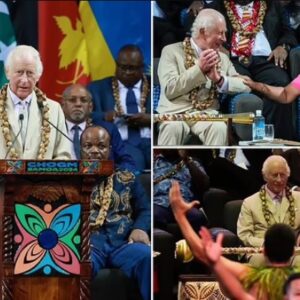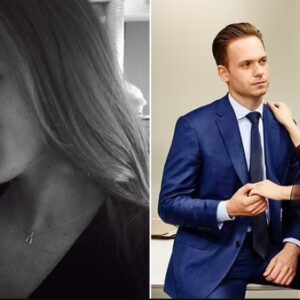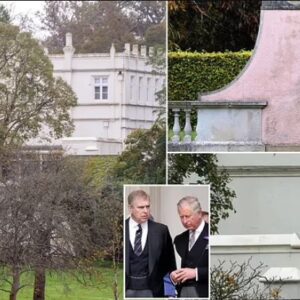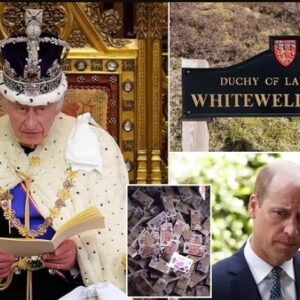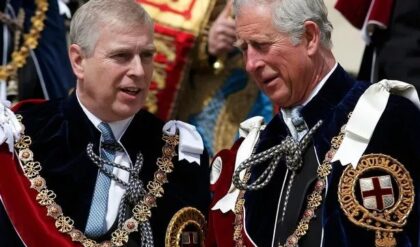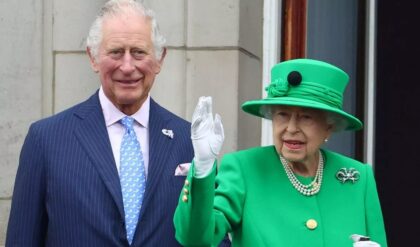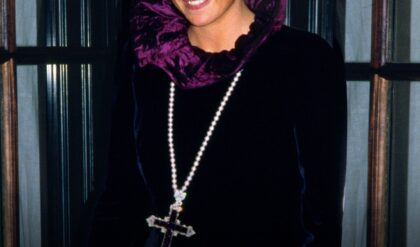Howard Shore, the composer for Peter Jackson’s The Lord of the Rings film trilogy, created an incredible soundtrack that defined the music of Middle-earth for a generation of fans. Shore made heavy use of leitmotifs, recurring pieces of music that denoted a certain character, location, or item. From the blaring horns and clanging metal of Isengard to the haunting melody of the One Ring, nearly every aspect of The Lord of the Rings had an associated theme. But few were as memorable as that of the Nazgûl, or Ringwraiths, Sauron’s nine most loyal servants.
The Nazgûl theme stood out from the rest of the soundtrack because of the echoing choir that chanted in a mysterious tongue when the Nazgûl appeared, such as when they attacked Aragorn and the hobbits at Weathertop. The leitmotif itself did not have an official name, as it was part of other pieces from The Lord of the Rings, like “The Black Rider” and “A Knife in the Dark.” But the lyrics that accompanied this theme were a poem titled “The Revelation of the Ringwraiths.” Given the care and attention that went into every detail of The Lord of the Rings trilogy, it was unsurprising that “The Revelation of the Ringwraiths” had a deeper meaning. When translated into English, the lyrics explained the backstory, abilities, and methods of the Nazgûl.
Updated on October 7, 2024, by Ajay Aravind: Some of the most fearsome dark warriors to be seen in Middle-earth, the Nazgûl were once humans now enslaved to Sauron by means of the “Nine Rings for Mortal Men Doomed to Die.” They remain quite mysterious throughout the legendarium — in fact, only one of their names has been recorded. However, Peter Jackson’s screenwriter Philippa Boyens wrote “The Revelation of the Ringwraiths” to give these entities some more backstory. As such, we have updated this article with some more relevant information.
Where Did the Nazgûl Come From?
The Only Named Ringwraith Was Khamûl, a Former Easterling
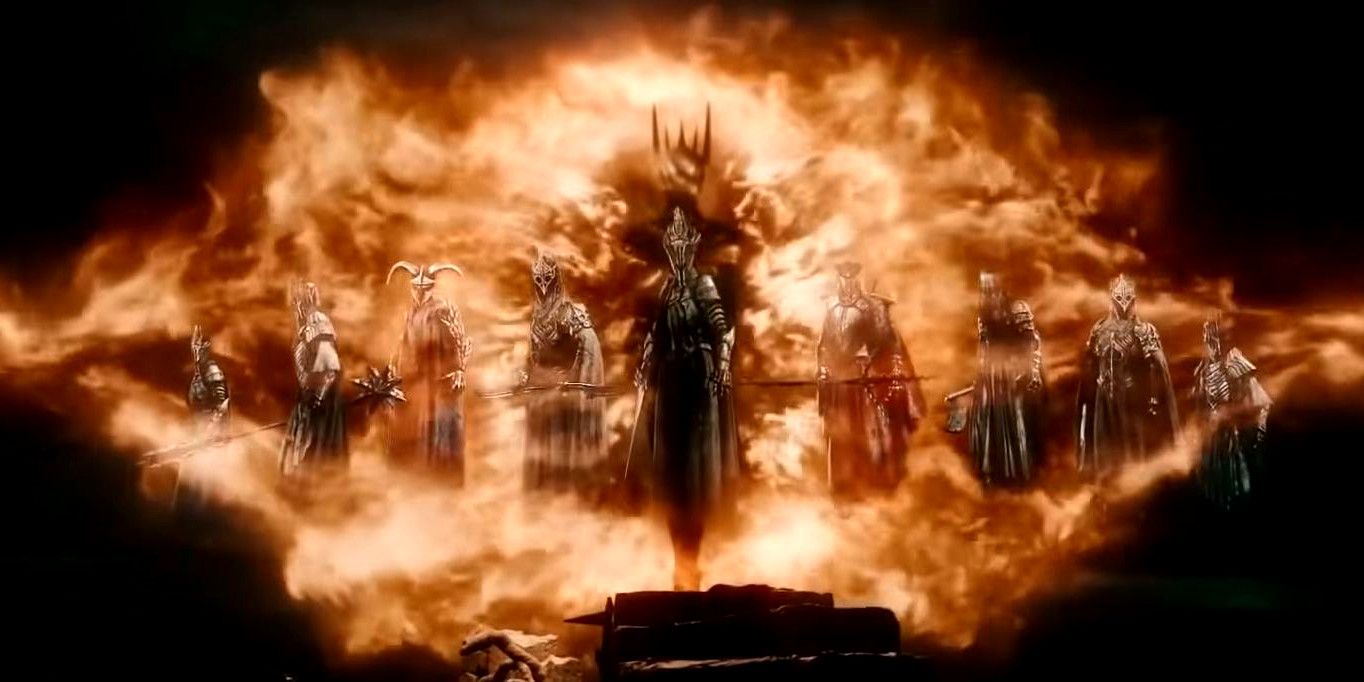
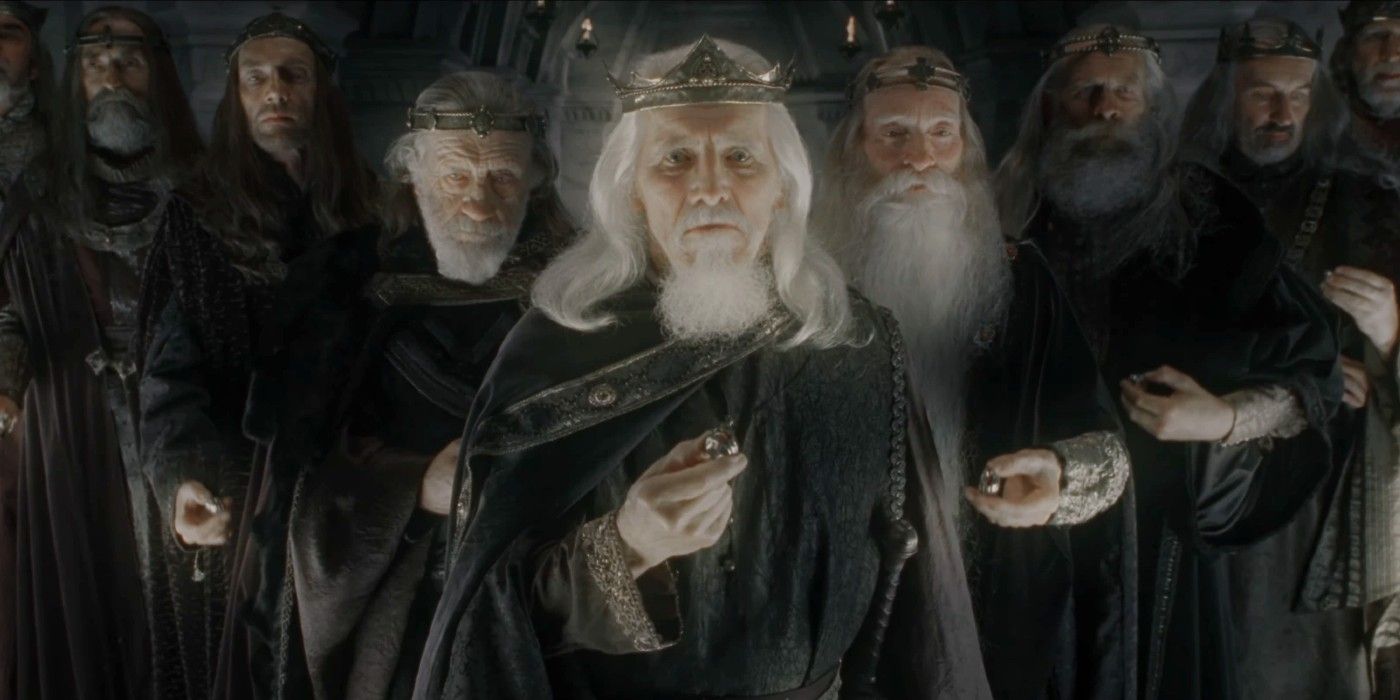
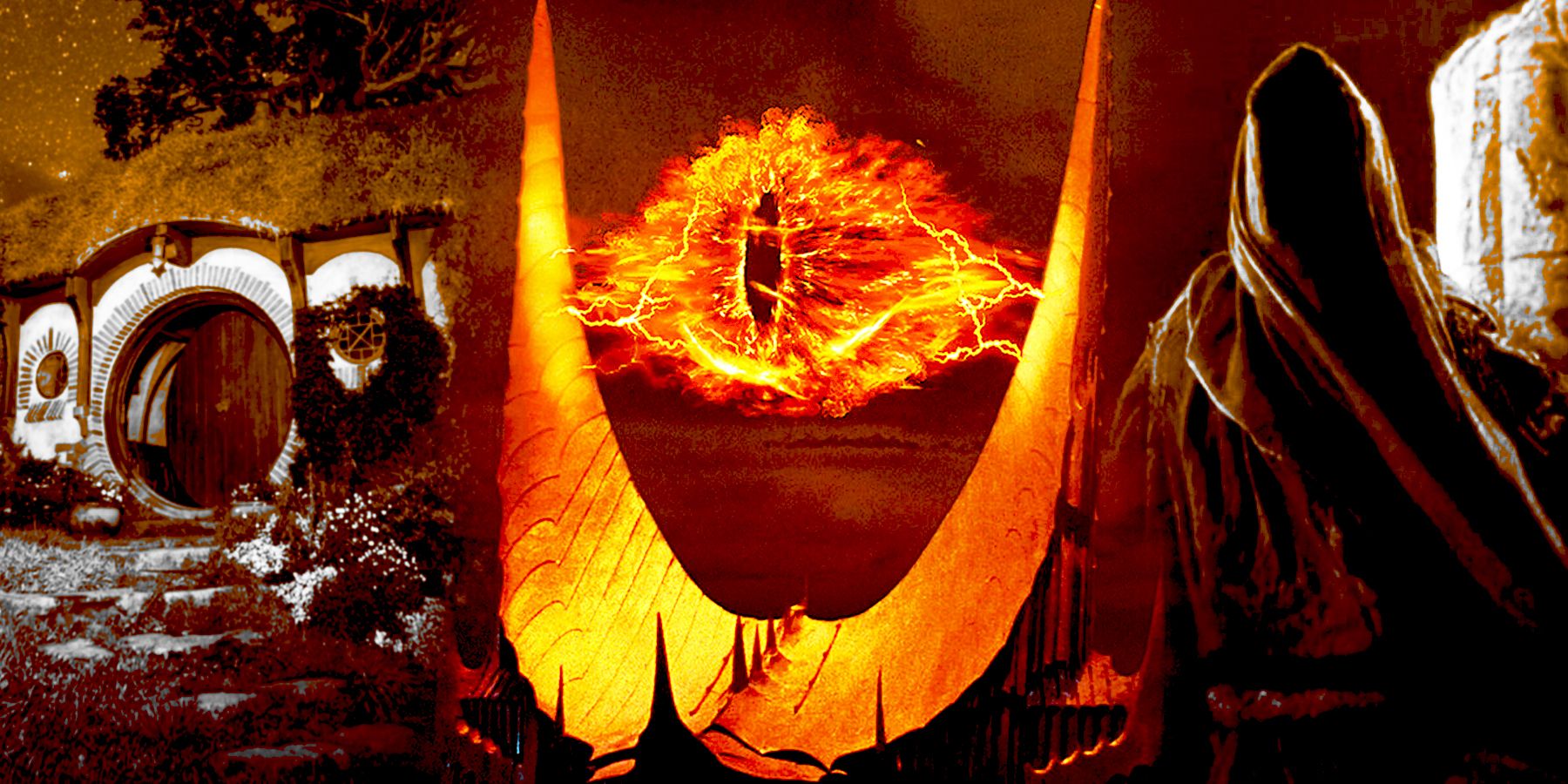
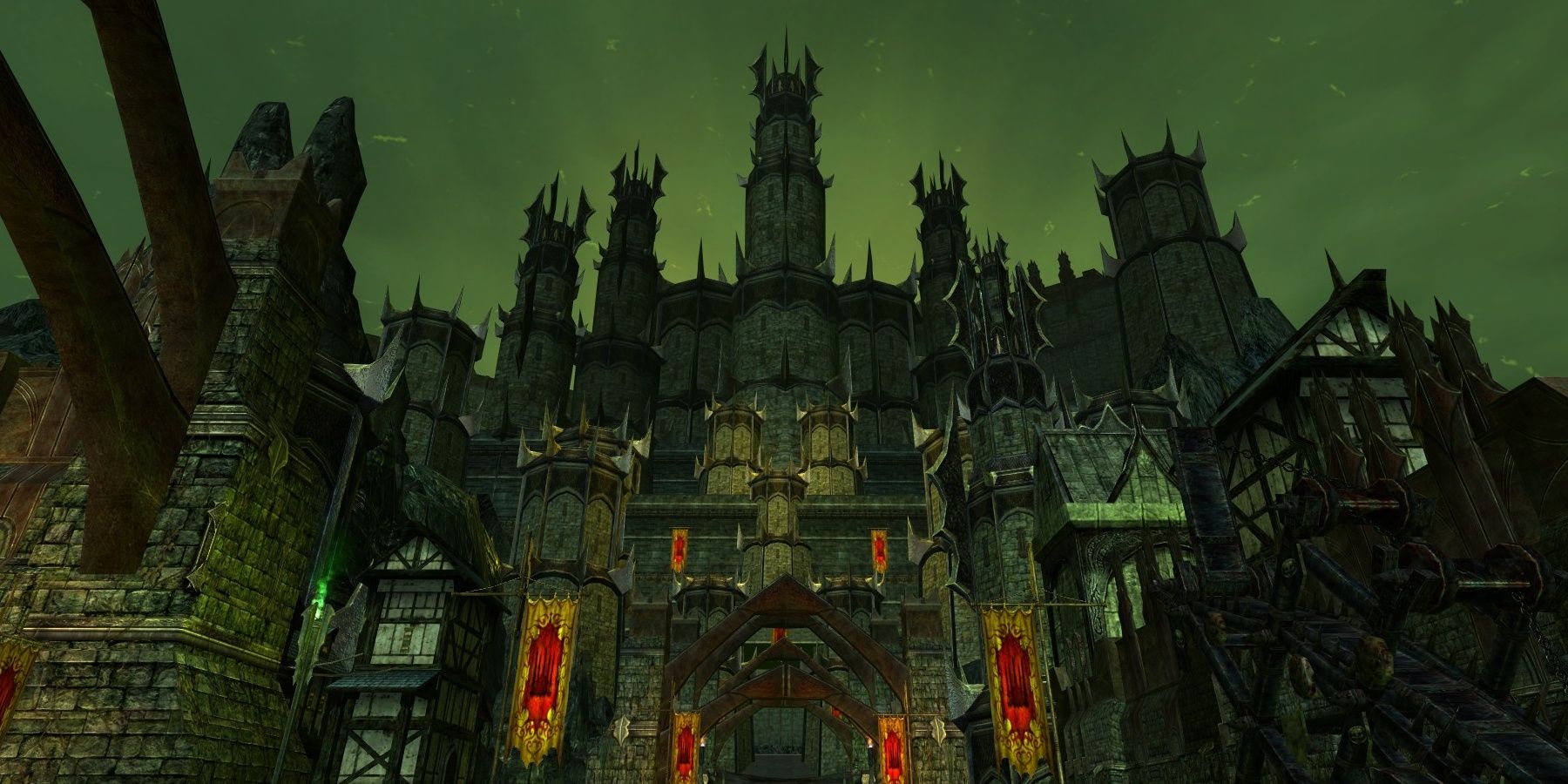




In the penultimate episode of Amazon’s The Rings of Power, Sauron essentially imprisoned Celebrimbor and forced him to work on the Nine Rings. Celebrimbor had initially refused the idea, claiming that Men were too weak and the Rings would corrupt them beyond repair. Although he did finish the Nine, Celebrimbor managed to give them to Galadriel for safekeeping. In the Season 2 finale, however, Galadriel subsequently lost all of them to Sauron. All things considered, however, the books didn’t make it very clear who Sauron offered the Nine Rings to.
Nine he gave to Mortal Men, proud and great, and so ensnared them. Long ago they fell under the dominion of the One, and they became Ringwraiths, shadows under his great Shadow, his most terrible servants —
Gandalf in Tolkien’s The Fellowship of the Ring
Powered as much by Celebrimbor’s Elven magic as Sauron’s evil sorcery, the Nine Rings allowed their human recipients to remain immortal and granted them various other powers. They were soon trapped under Sauron’s spell, from which they would never escape. The first of the Nazgûl emerged in the third millennium of the Second Age, doing the Dark Lord’s dark bidding until their defeat at the War of the Last Alliance. As Sauron slowly recovered without the One Ring, so did the Nazgûl, explaining why they only resurfaced when it was time to find “Shire” and “Baggins.”
The Nazgûl Theme Used an Ancient Language
Adûnaic was the ancestor of Westron, the Common Speech of Middle-earth
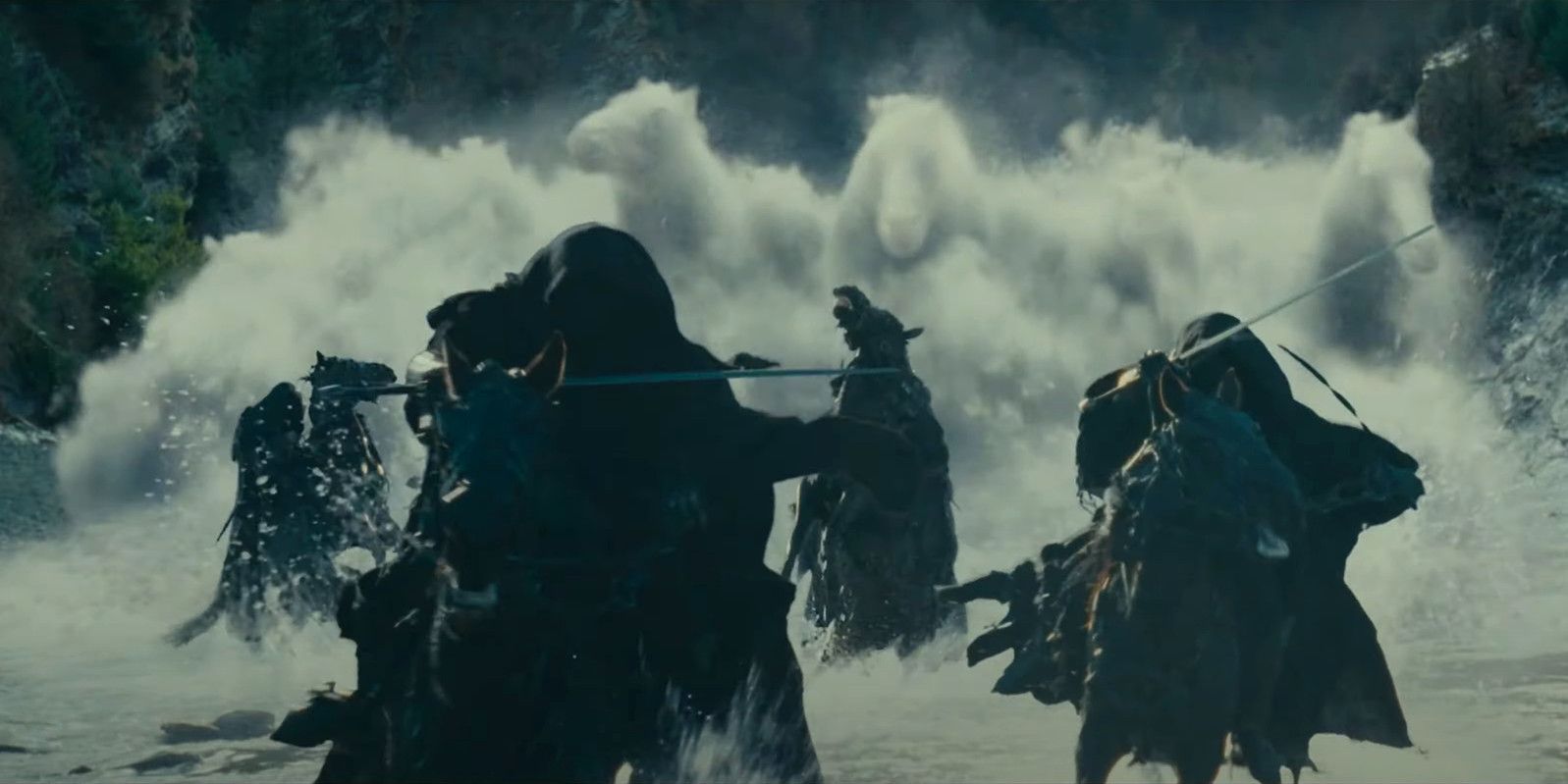
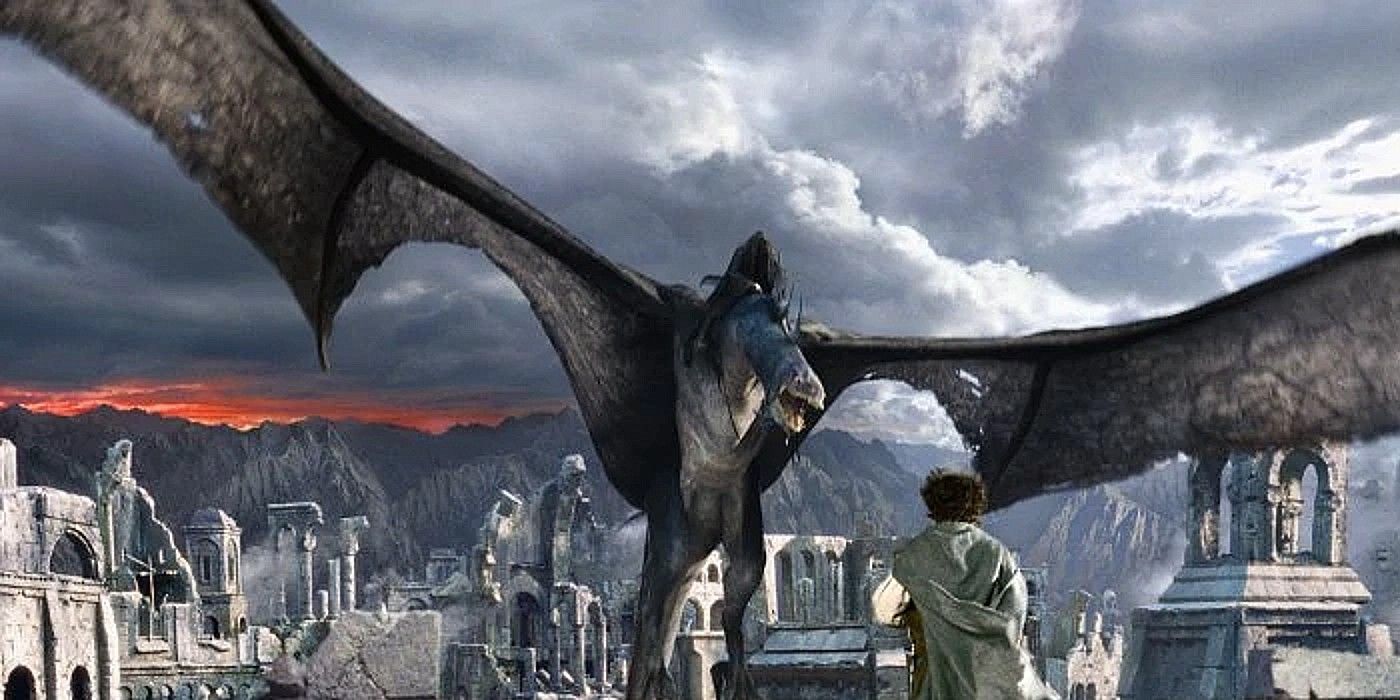
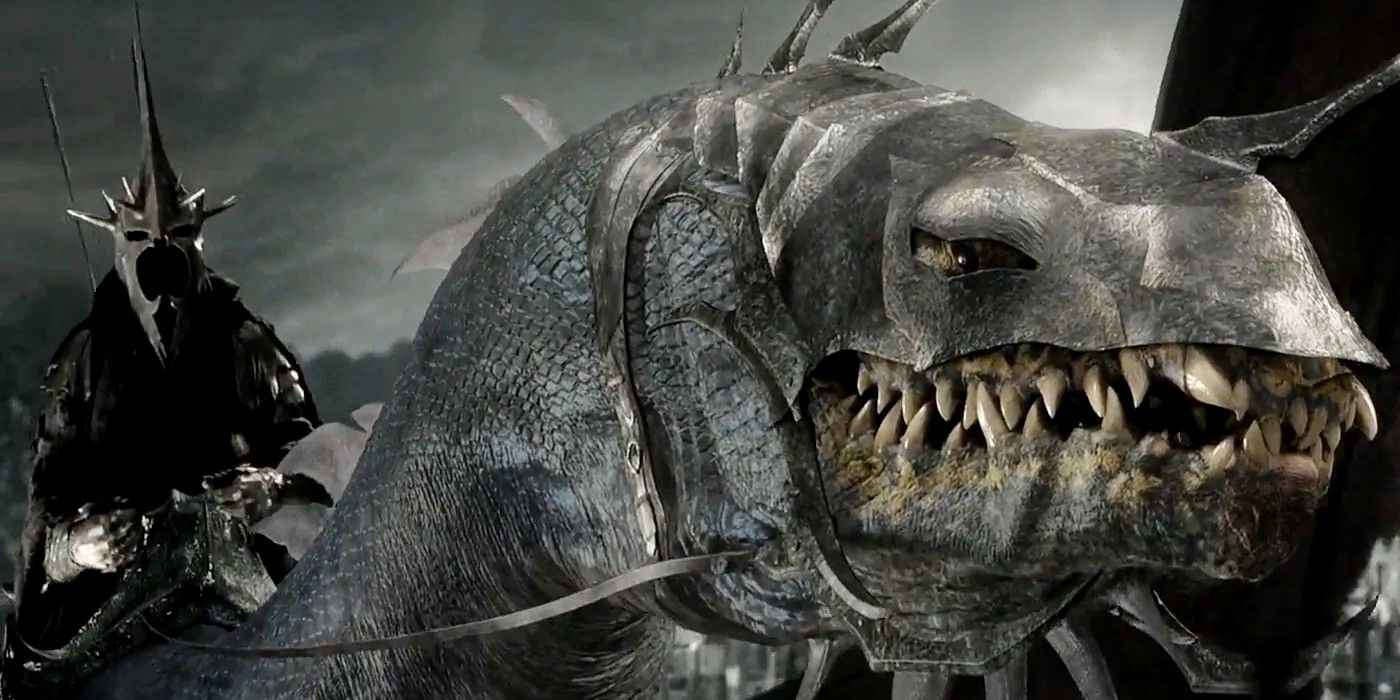



“The Revelation of the Ringwraiths” was written in Adûnaic, one of the many fictional languages that J. R. R. Tolkien created for his novels. Adûnaic was the language of Númenor, the island kingdom from the Second Age in which Aragorn’s ancestors lived. This choice was likely because three of the Nazgûl — including their leader, the Witch-king of Angmar — were from Númenor before they became Sauron’s minions. Some Rings of Power fans believe that Ar-Pharazôn will be one of them, even if that doesn’t happen in the books. Tolkien did not develop Adûnaic to the extent that he did many of his other languages; it consisted of fewer than 200 words. Therefore, the creators of The Lord of the Rings films made some additions to the Adûnaic language to fill in the gaps that Tolkien left.
“Revelation of the Ringwraiths” Lyrics
Official Translation from The Music of the Lord of the Rings Films
Nêbâbîtham Magânanê
We renounce our Maker
Nêtabdam dâur-ad
We cleave to the darkness
Nêpâm nêd abârat-aglar
We take unto ourselves the power and glory
îdô Nidir nênâkham
Behold! We are the Nine
Bârî’n Katharâd
The Lords of Unending Life
read less
In 2010, journalist Doug Adams published The Music of the Lord of the Rings Films: A Comprehensive Account of Howard Shore’s Scores, a collaboration with Shore that detailed the soundtrack of The Lord of the Rings. It provided an official translation of “The Revelation of the Ringwraiths” and credited the creators of the Nazgûl theme. Like much of the trilogy, the song was a collaborative effort. Screenwriter Philippa Boyens, who co-wrote The Lord of the Rings and The Hobbit films, penned the lyrics of “The Revelation of the Ringwraiths” as a poem. David Salo, an expert on Tolkien’s languages, then translated the poem into Adûnaic, and Shore composed the instrumental accompaniment for these lyrics.The Nazgûl Theme Was Deeply Symbolic
Shore won two Academy Awards for his work on the LOTR trilogy.
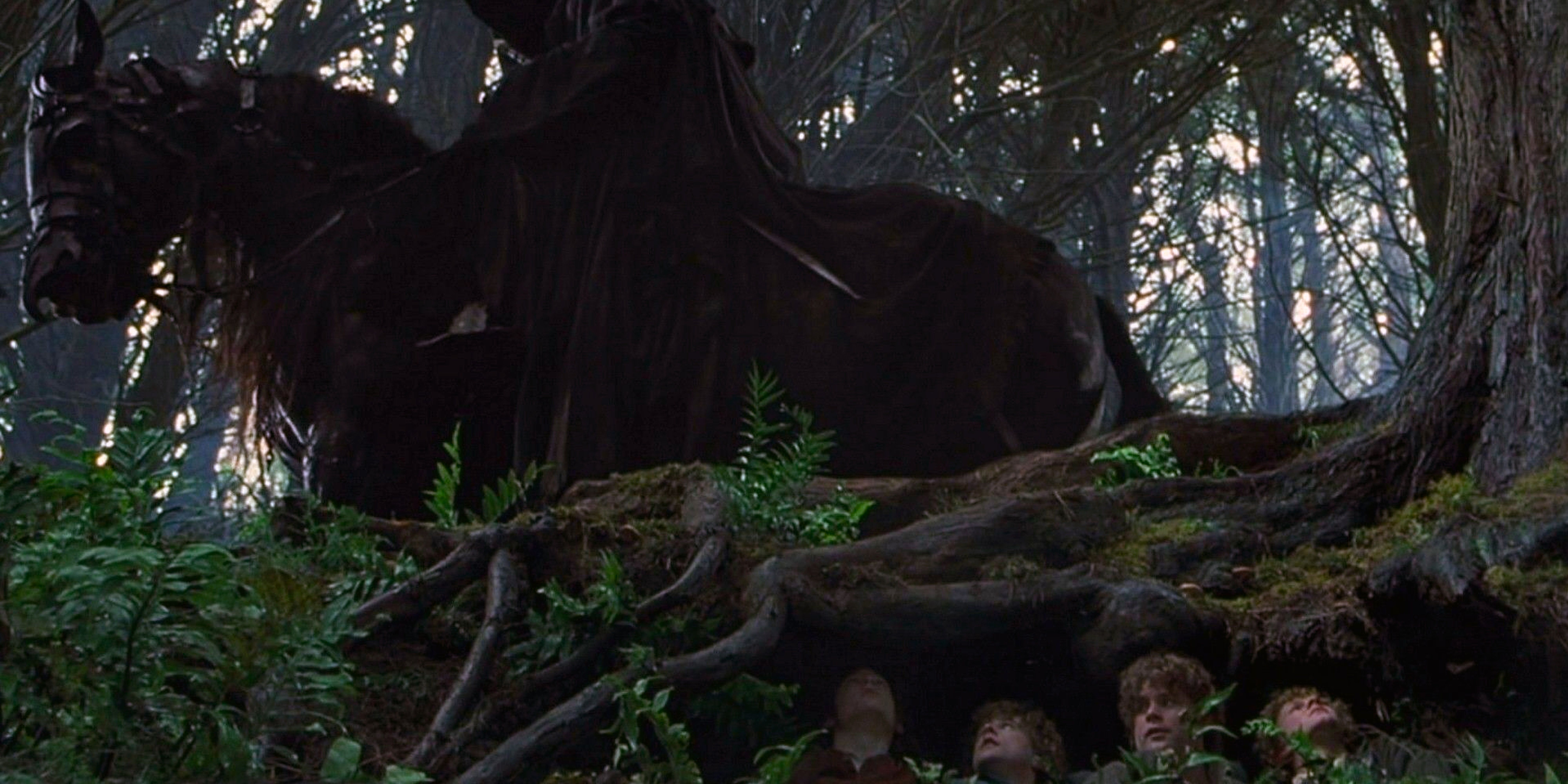
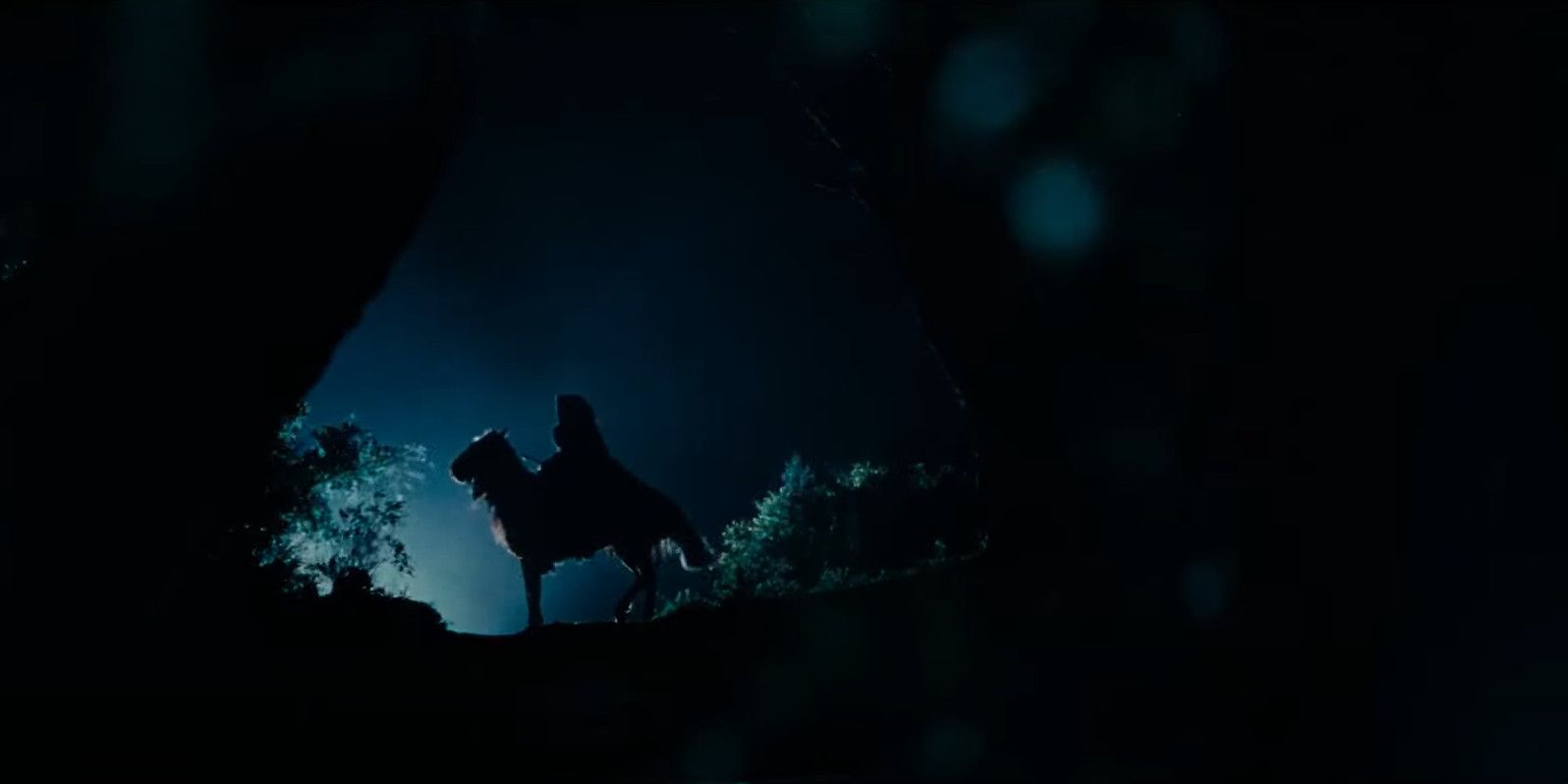
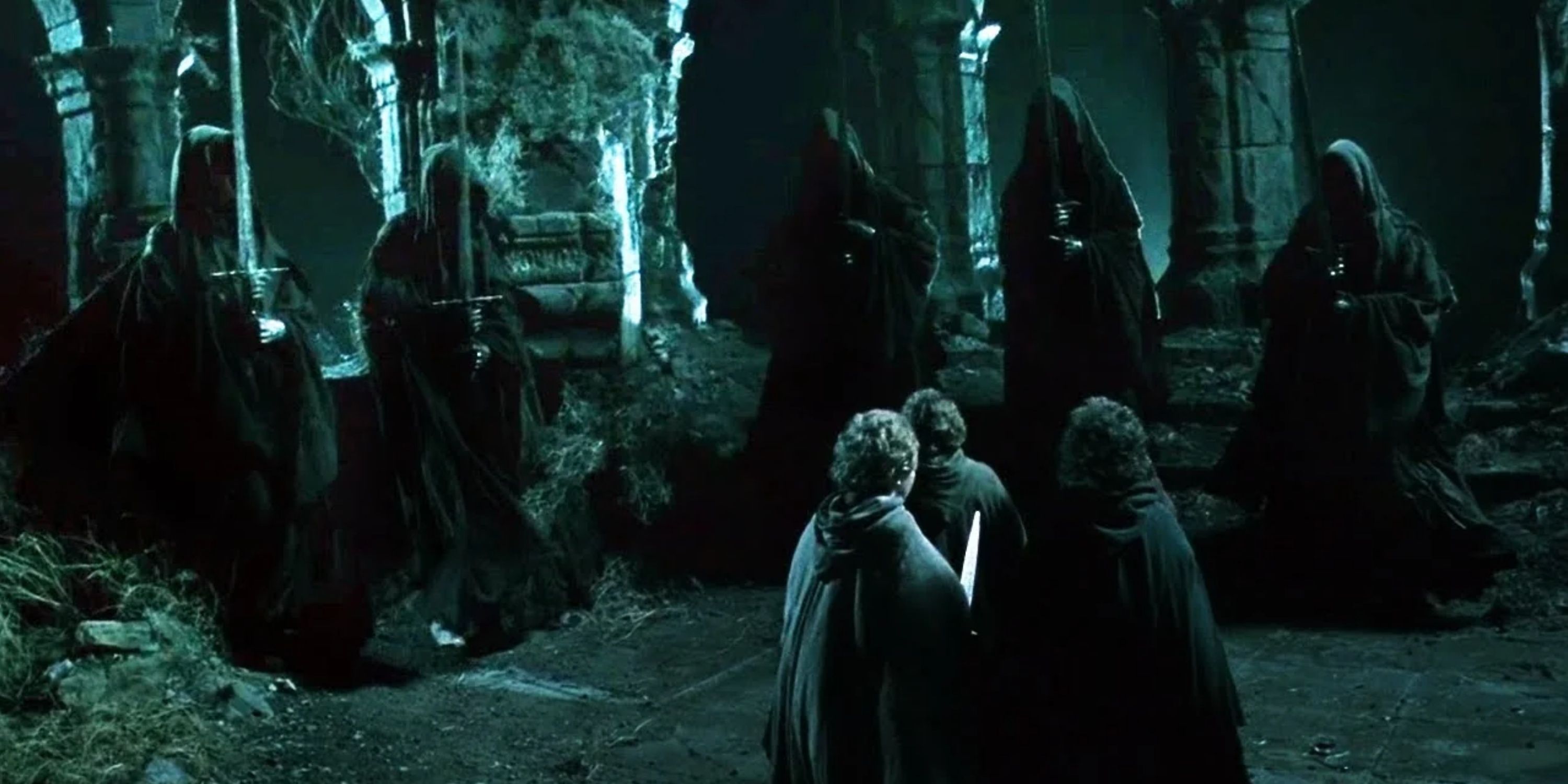
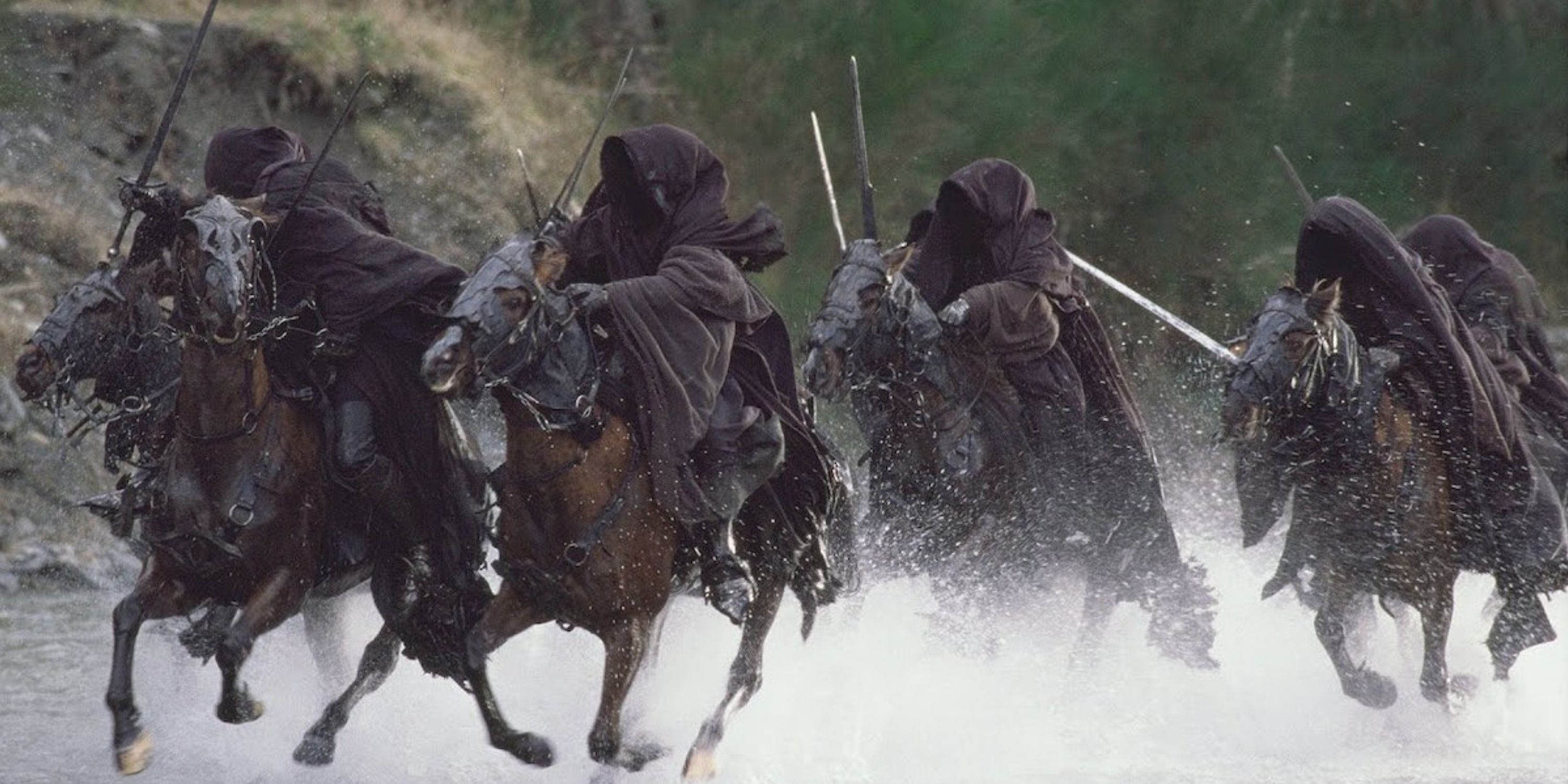




The opening line of “The Revelation of the Ringwraiths” was “We renounce our Maker.” The “Maker” in question was Eru Ilúvatar, the god of The Lord of the Rings. Sauron’s master, Morgoth, was the original Dark Lord who rebelled against Ilúvatar, so by aligning themselves with Sauron, the Nazgûl became enemies of Ilúvatar. This was somewhat ironic because even though Ilúvatar was their creator in a cosmological sense, it was Sauron who made them the Nazgûl — and his hold over them was so strong that they could never renounce him. The next line, “We cleave to the darkness,” referred to the fact that the Nazgûl operated from the shadows, both literally and figuratively. Like most evil creatures in The Lord of the Rings, they hated sunlight, so they mainly hunted for Frodo under the cover of night. This line was also a play on words, as “cleave” can mean “to cut,” which the Nazgûl often did with their Morgul blades.
The Rings of Power
Names
Known Users
Nine Rings for Men
None
Khamûl, The Witch-king of Angmar
Seven Rings for Dwarves
The Ring of Thrór
Durin III, Thrór, Thráin II
Three Rings for Elves
Nenya, Narya, Vilya
Círdan, Gil-galad, Galadriel, Gandalf, Elrond
The One Ring
None
Sauron, Gollum, Bilbo, Frodo
“We take unto ourselves the power and glory” described the offer that Sauron made to the nine Men who would become Nazgûl. According to the section “Of the Rings of Power and the Third Age” from Tolkien’s The Silmarillion, Sauron’s Rings of Power transformed them into great “kings, sorcerers, and warriors,” but they lost their humanity and free will in the process. On the surface, “Behold! We are the Nine” was a straightforward line about the number of Nazgûl, but when capitalized, “the Nine” was also a term that Tolkien used for those Rings of Power. Perhaps this line came from the perspective of the Rings of Power since they had control over the Nazgûl. The song ended with the phrase “The Lords of Unending Life,” referencing both their immortality and the high status that many of them attained with their Rings of Power.
The Nazgûl Theme Returned at a Surprising Point in The Hobbit
The Ringwraith Leitmotif Is Also Used for Other Villainous Characters
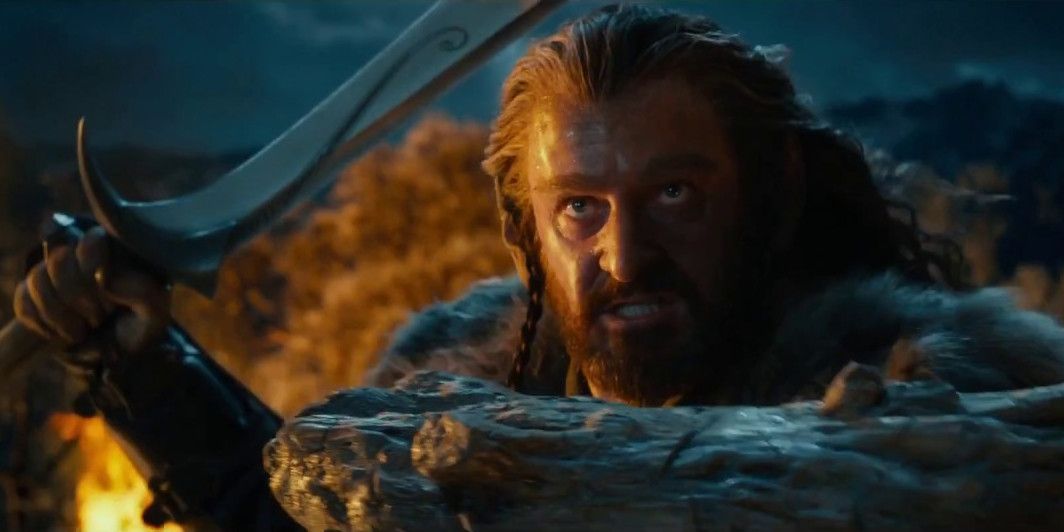
Strangely, the Nazgûl theme also played during a scene from The Hobbit: An Unexpected Journey, in which no Nazgûl were present. Near the end of the film, the Orcs cornered Bilbo, Gandalf, and Thorin’s company of Dwarves on the edge of a fiery cliff. Initially, the heroes fled to the treetops to escape, but Thorin then recognized his nemesis, Azog the Defiler. Longing to avenge his grandfather, Thorin returned to the ground and charged at Azog. As Thorin ran through the fire in slow motion, the familiar Nazgûl theme began to play, complete with its haunting choir. This must have been a late addition to the film, as The Hobbit‘s official soundtrack included different music for this scene. To many viewers, the theme playing at this point seemed out of place, but it was not the first time that the Nazgûl theme played without any Nazgûl.
The first instance of the Nazgûl theme occurred during the prologue of The Lord of the Rings: The Fellowship of the Ring. It began playing when the Orc armies advanced towards the Last Alliance of Elves and Men. After a brief pause when Sauron appeared on the battlefield, it continued as he swung his mace through the legions of his enemies. The theme represented the forces of evil in The Lord of the Rings more so than the Nazgûl specifically. The use of this music in The Hobbit established a connection between Azog and the Witch-king, with whom he had much in common. Each was Sauron’s strongest minion at that point in Middle-earth’s history, each rode at night, each spent time at Weathertop, and each wielded a blade in addition to a bludgeoning weapon. The use of this theme could also have foreshadowed that the gold of Erebor would corrupt Thorin like the Rings of Power corrupted the Nazgûl. The Nazgûl sharing their leitmotif with Sauron and his other minions was emblematic of their complete subservience to the Dark Lord; they were nothing more than his puppets, and he took their music away just like their humanity.
News
‘None of us can change the past’: King Charles BACKS Keir Starmer in effectively ruling out paying billions in reparations for slavery
King Charles backed Sir Keir Starmer in effectively ruling out reparations over slavery today, saying: ‘None of us can change the past. But we can commit, with all our hearts to learning its lessons and to finding creative ways to right inequalities that…
Meghan Markle’s Suits co-star Patrick J Adams shares previously unseen photo of the Duchess while filming – and fans are all saying the same thing
Meghan Markle‘s Suits co-star Patrick J Adams has shared an unseen photo from her days as Rachel Zane on the long-running legal drama. Adams, who played Mike Ross, posted behind-the-scenes photos of the Suits cast on Instagram on Tuesday, while promoting…
Prince Andrew’s crumbling mansion is revealed: Duke’s 30-room Royal Lodge falls into disrepair with cracks and mould seen in photos – after King axed his brother’s £1m allowance
Prince Andrew’s mansion has fallen into disrepair, with cracks and mould appearing on the outside walls. Crumbling paintwork, cracks, and black mould can be seen on the outside walls where inside his beloved mother once roamed with her sister Margaret as…
King Charles is under growing pressure to refund the cash-strapped NHS – after he charged one trust more than £11m to park ambulances on his land
The King is under pressure to refund the cash-strapped NHS after it emerged he is charging one trust at least £11.4million in rent to store a fleet of electric ambulances. An investigation found the private estates of both King Charles and Prince William make millions of pounds…
Moment King Felipe snaps back after he and Queen Letizia were pelted with mud while visiting ‘abandoned’ flood survivors in Valencia: Locals say ‘what did he expect’ as fury grows – and death toll reaches 217 with bodies of two more Brits found
Spain‘s King Felipe was seen snapping at Valencian locals who screamed and threw mud at him and his wife as they visited the region in the wake of the devastating floods that have so far killed 217. The monarchs had…
Outer Banks Season 4’s Mid-Season Twist, Explained
This is a pinch-me-moment because one of the best shows on Netflix has finally returned. Season 4 of the hit Netflix series Outer Banks is here, and it is needless to say each episode is its very own rollercoaster of emotions, inside jokes, and…
End of content
No more pages to load
